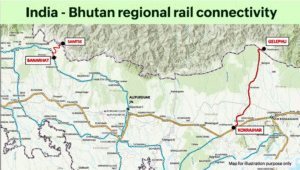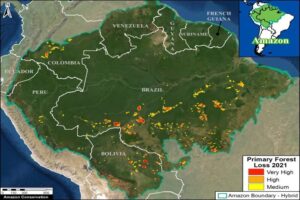
Renewable and Protected – Securing India’s Wind Energy Sector in the Digital Age
CLAT Current Affairs 2026 | Best Online Coaching for CLAT | Online Coaching for CLAT
Why in News
India’s wind energy sector, a key part of its clean energy transition, is facing rising cybersecurity concerns, following a false but viral report claiming a cyberattack by Pakistan had knocked out 70% of India’s electricity. Though the report was fake, it revealed a critical vulnerability: India’s renewable infrastructure remains digitally unguarded.
This has triggered a wider debate around cybersecurity, localized manufacturing, and the urgent need for technological self-reliance in India’s wind sector, particularly as the country targets over 500 GW of non-fossil-based electric capacity by 2030, including 100 GW from wind energy alone.
Introduction
While India has made commendable progress in deploying wind power by improving turbine efficiency and grid integration, the sector now faces 21st-century threats, including cyberattacks, foreign software dependence, and supply chain vulnerabilities.
The article argues that manufacturing innovation, cybersecurity readiness, and localized R&D (Research & Development) are crucial for India to truly lead in renewable energy. In the absence of robust embedded systems, secure SCADA protocols, and indigenous control mechanisms, even green power could be turned off at will in cyber warfare.
For CLAT 2026 aspirants, this topic integrates constitutional goals, environmental sustainability, national security, and economic self-reliance—making it interdisciplinary and legally significant.
Point-wise Summary for CLAT and UPSC Aspirants
- Cybersecurity Risks in Wind Energy
A Pakistani outlet falsely claimed 70% of India’s power was knocked out via cyberattack.
Though untrue, it underscored genuine risks to digital infrastructure.
Most wind systems use SCADA (Supervisory Control and Data Acquisition), vulnerable to remote-access breaches.
- Current Achievements in the Sector
India has improved:
Turbine efficiency
Grid connectivity
Speed of deployment
These gains are foundational but insufficient in digital warfare scenarios.
- The Hidden Problem: Cybersecurity Lag
Unlike defence or finance sectors, where cyber shields are strong, India’s renewable sector lacks robust digital security.
Threats include:
Remote takeovers of wind farms
Malware in PLCs (Programmable Logic Controllers) and embedded systems
Lack of audits for software vulnerabilities
- The Bigger Mission: 500 GW by 2030
India aims for 500 GW of non-fossil-based capacity by 2030, including 100 GW from wind energy.
The challenge is not just how much energy is produced, but how safely and indigenously it is manufactured.
- Local Manufacturing and R&D Gaps
India currently depends on foreign Original Equipment Manufacturers (OEMs).
NITI Aayog’s 2024 roadmap pushes for:
Localization of manufacturing
Mandatory in-country R&D by OEMs
Shift from passive assembly to innovation hubs
- Why Local R&D Matters
It’s not just job creation—turbines need to be built for India’s geography, including:
Coastal areas
Dust-prone plains
High-heat zones (45°C+)
European-designed windmills buckle under Indian conditions.
- Problems with Current Policy
Current amendments lack:
Enforcement mechanisms
Clarity on embedded system certification
Strong domestic testing infrastructure
“Make in India” lacks teeth unless local design, not just assembly, is enforced.
- Certification Challenges
Lack of Indian standards makes it tough for:
Indian vendors to clear tenders
Enforcement of quality benchmarks
Revised List of Models and Manufacturers (RLMM) is still not aligned to local performance needs.
- Strategic and Security Implications
Without secure embedded systems, wind farms can be remotely shut down.
This becomes a serious risk during:
Geo-political tensions
War-like conditions
Critical natural disasters
The energy grid becomes a potential target for foreign control or sabotage.
- 🇮🇳 India’s Policy Direction
The need of the hour:
Mandatory R&D investment from OEMs
Cybersecurity audits for every wind system
Legal push for localized software development
Formation of a national cyber-resilience framework for renewables
Legal and Constitutional Relevance
- Article 21 (Right to Life)
Includes the right to safe living conditions.
Disruptions to power and energy infrastructure pose threats to public health and national security.
- Article 51A(h)
Promotes the duty of every citizen to develop scientific temper.
Supports innovation and self-reliance in energy tech.
- Energy Conservation Act, 2001
The act mandates efficient energy use.
With amendments, it can expand to include cybersecurity as part of energy efficiency.
- Environmental Protection Act, 1986
Can be interpreted to include protection of clean energy systems from sabotage or technical disruption.
Important Terms Explained
Term | Meaning |
SCADA | Supervisory Control and Data Acquisition – system that monitors & controls power plants remotely |
OEMs | Original Equipment Manufacturers – companies that produce wind turbines, software, and embedded electronics |
RLMM | Revised List of Models and Manufacturers – GOI-approved list of eligible wind energy models for subsidies and approvals |
PLCs | Programmable Logic Controllers – small computers that control turbine functions; vulnerable to malware |
Embedded Systems | Built-in software inside machines like wind turbines or solar inverters, often invisible but highly critical |
Relevance for CLAT 2026 and UPSC
Legal Reasoning: National security + public interest laws
GK/Current Affairs: Energy policy, clean tech innovation, international cyber threats
Legal Aptitude: Infrastructure regulation, environmental law, constitutional protections
Conclusion
India’s journey to becoming a global renewable leader is not just about scaling up—it is about securing what we build, localizing how we manufacture, and innovating for Indian conditions. As we march toward 500 GW of green capacity, it is imperative to ensure that our wind farms are not only efficient—but also secure, indigenous, and cyber-resilient.
For CLAT 2026 aspirants, this topic encapsulates the intersection of tech law, constitutional governance, environmental sustainability, and national security—making it a top-choice theme for essays, legal reasoning scenarios, and objective questions.




